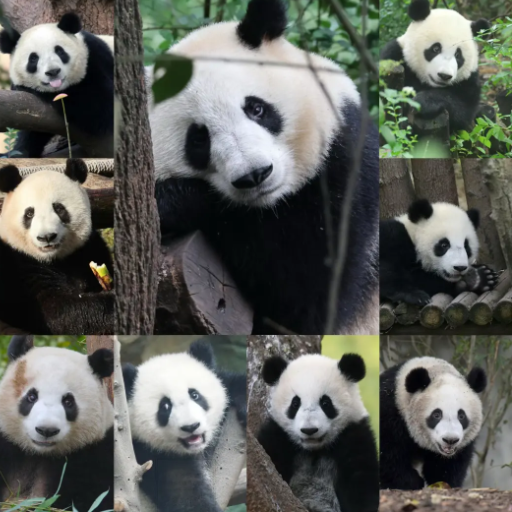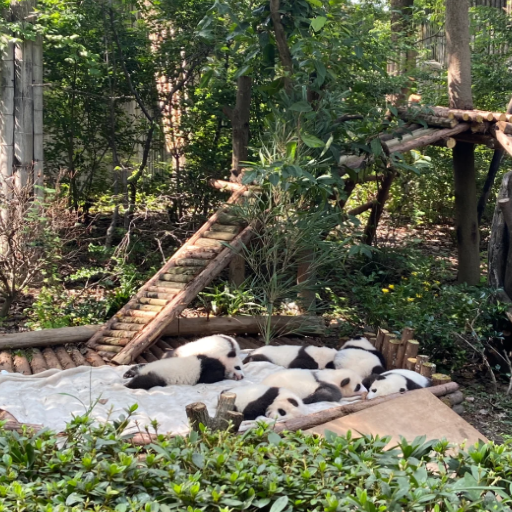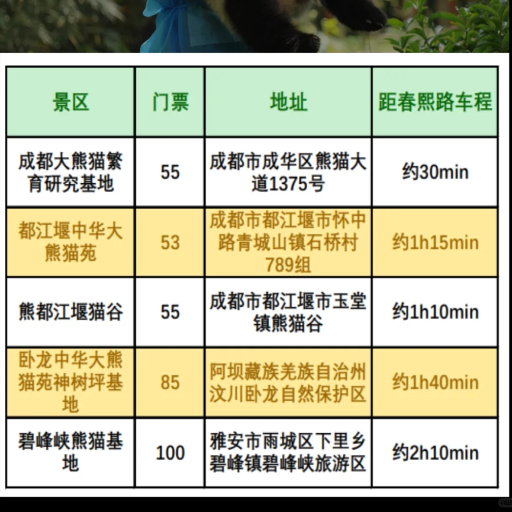We are pleased to present ‘The Complete Guide of Chengdu Panda Base.’ Use it as a guide to learn more about one of the major tourist hotspots in China. This guide will equip you with everything for your next journey to meet the giant pandas up close and personal. How does the Chengdu Panda Base fit into the world of conservation, what are their goals, what are the best times of the year to visit, which sections of the base are must-sees, and where are you most likely to view these incredible animals in their naturalistic environments are just some of the questions we will address. This guide is perfect for anyone interested in wildlife, traveling with families, or tourists wanting to know what Chengdu is famous for. Prepare to dive into the universe of extraordinary giant pandas; this destination will offer you the chance to create invaluable experiences for life.
How to Get to the Chengdu Panda Base

How to Get to the Chengdu Panda Base
The Chengdu Panda Base can be easily accessible since it is only about 10 kilometers (6 miles) from downtown Chengdu. If you travel by taxi, it will take about 30 minutes to get there, while buses 198 and 87 will leave you near the entrance. An authorized tour service is an excellent option because it is eco-friendly and provides a safer ride. Try to arrive as soon as possible in the morning so that you can see the pandas when they are most active.
Best Routes to Get to Chengdu
Chengdu is a well-connected city and can be accessed through various modes of transportation, depending on your location and preference.
- By Air: Chengdu Shuangliu International Airport is one of China’s busiest air hubs and offers domestic and international flights. Flights from Beijing, Shanghai, and Hong Kong take 2 to 4 hours, while direct flights to Los Angeles, London, and Bangkok vary. You can get to a taxi, airport shuttles, and Chengdu Metro Line 10 can take you downtown in 30-40 minutes.
- By Train: Chengdu’s high-speed rail covers all major cities, such as Chongqui, Xi’an, and Guangzhou. For instance, a train journey between Chongqing and Chengdu takes about 1.5 hours on G series trains. Chengu has numerous railway stations, with Chengu East being the most prominent for high-speed rail. Please check the travel time and purchase your tickets well in advance during peak travel periods.
- By Bus: If traveling from the neighboring provinces and regions, long-distance buses are a great option. The majority of buses arrive and depart from Chengdu Chadianzi Bus terminal, one of the major terminals in Chengdu; however, travel times may differ based on distance.
- By Car: For driving enthusiasts, G5 (Beijing-Kunming Expressway) and G93 (Chengdu-Chongqing Ring Expressway) offer excellent routes to Chengdu. Still, you must remember that traffic is applied during peak days like holidays.
- Aspects to Consider for Transportation:
- Travel Time: Flights (2-14 hours), High-Speed Trains (1.5-8 hours), and Buses/Cars (varies by distance).
- Cost Estimates: Flight ($100-$500), Train ($20-$100), Bus ($10-$50), Car fuel/toll costs vary.
- Convenience and Accessibility: In Chengdu, public transportation options like the metro or direct shuttles are abundant.
Select a route that fits your schedule so you can arrive in this lively city without hassle!
Transportation Options to Get to Chengdu Panda Base
Getting to the Chengdu Research Base of Giant Panda Breeding is straightforward and has multiple convenient options. Below are the main transportation methods:
- Public Bus: Take Bus Line 198A or 198B from downtown Chengdu directly to the Panda Base. The bus operates daily from early morning to evening, costs approximately 2-3 RMB per trip, and takes about 40-50 minutes depending on traffic.
- Metro and Shuttle Service: Take Chengdu Metro Line 3 and get off at Panda Avenue Station. A shuttle service runs directly to the base, with 5-10 RMB fares. The total travel time is about 35-45 minutes.
- Taxi and Ride-Hailing Services: A taxi or ride-hailing option such as Didi from downtown Chengdu costs approximately 30-50 RMB and takes 25-40 minutes, depending on the time of day and traffic. This is a highly convenient option for travelers seeking comfort.
- Driving: If you have a private car or rental, the base is approximately 10 km (6 miles) from central Chengdu. Follow the designated directions via Panda Road. Parking is available near the entrance, with typical fees of 10-20 RMB.
Each option caters to different preferences regarding cost, time, and convenience. Plan your trip early to make the most of your visit to this iconic destination!
Tips for Travelers Visiting Chengdu City
Below are some essential recommendations from my standpoint should you want your trip to Chengdu to be as pleasant and seamless as possible:
- Best Time to Visit: I highly recommend going between either March and June or September to November since the temperature is moderate and there aren’t too many visitors. Do know that July and August can get very sticky.
- Local Transportation: The Chengdu metro system is very effective and user-friendly. It operates between 6 AM and 11 PM and has 2 to 10 RMB fares. Taxis are also reasonably priced, but make sure they are on a meter. The first 2 kilometers in a taxi will cost between 9 and 12 RMB.
- Cuisine Tips: If you are trying out the local Sichuan hotpot and are not used to extreme spice, I recommend starting with the mildest option. Moreover, search for restaurants that sell a “yuan yang pot” for those who like dual-flavor options.
- Cultural Etiquette: Always respect the locals’ way of life. Modesty is key when visiting temples, so dress respectfully, avoid loud behavior, and remember to offer and accept with two hands.
- Panda Base Visits: Online booking can save you time, and entry tickets cost around 55 RMB per person. Also, try to get there by eight at the latest so you can see the pandas during their active hours.
Hopefully, you will find Chengdu as wonderful as I am with these tips.
What to Expect at the Research Base of Giant Panda

What to Expect at the Research Base of Giant Panda
As a sanctuary for panda lovers and defenders of wildlife, The Research Base of Giant Panda will not disappoint. The clean and spacious park features lush bamboo groves and well-maintained enclosures designed to mimic the natural habitats of pandas. Observatory areas like the nursery, kindergarten, and adult habitats let visitors witness the different panda life stages, from adorable cubs to serene adults. Informative exhibits help the public understand panda breeding, behavior, and ecological preservation efforts. Convenient facilities such as cafes, gift shops, and parks guarantee a comfortable experience for all visitors. For a favorable experience, plan your visit early in the day to see the pandas when they are active and full of energy.
Overview of the Chengdu Research Base of Giant Panda
The Chengdu Research Base of Giant Panda is famous for its extensive conservation and research efforts on pandas. At 247 acres, the facility offers several eco-friendly habitats that closely resemble the pandas’ natural environment. Over 100 giant pandas, red pandas, and other native wildlife highlight the park’s biodiversity. Guests can visit specially designed zones, such as the nursery, home to baby pandas, and the adult habitats, where mature pandas reside in semi-wild enclosures.
To address the issue of panda extinction, the research center focuses on the breeding and genetics of the giant panda. This, along with other advanced facilities, has enabled them to achieve breeding success rates of over 95%, with most newborn cubs surviving over a year. In addition, the center engages in educational activities, such as programs and other campaigns, to educate the general public on the significance of conservation efforts.
- Total Area: 247 acres (1,000,000 square meters)
- Number of Pandas (approx.): 100+ giant pandas, additional red pandas
- Optimal Visiting Hours: Early morning (8 AM – 10 AM) for panda activity
- Key Facilities Include:
- Breeding and research labs
- Naturalistic habitats
- Panda nursery
- Visitor amenities (cafes, rest areas, gift shops)
Since its inception, the Chengdu Research Base has strived to achieve a world-class infrastructure, continue its efforts in panda preservation, and dedicate itself to conservation, aiming to become a global symbol of successful preservation and environmental awareness.
Main Attractions at the Giant Panda Breeding Research Base
- Panda Enclosures and Habitats
The panda enclosure base has prosperous bamboo and open regions blended with exploratory areas that strive to copy the scenic wonders of the panda’s native surroundings. Visitors observe the pandas’ daily activities, which include eating, climbing, and playing.
- Panda Nursery
Numerous visitors also highlight the nursery as a home for panda cubs. Visitors capture stunning moments marveled at by expert attendants. Newborns are frequently visible during the birth season between late summer and early fall. Facilities adopt advanced care techniques to ensure the cubs’ growth and health.
- Breeding and Research Labs
The breeding center features genetic engineering, panda reproduction, and research. The labs have advanced methodologies for following reproductive seasons and designing new conservation actions for the species’ survival.
- Swan Lake
Within the base, Swan Lake is a calm part where one can appreciate the breathtaking view. While the visitors relax in nature, they can view swans, peacocks, and other creatures that splendidly live together with the pandas.
- Educational Exhibits and Theaters
Interactive exhibits and 3D theaters inform attendees about pandas’ biology, behavior, and conservation. The vivid, lifelike experience inspires viewers to conserve these pandas so they do not become extinct.
- Volunteer and Conservation Programs
For more involvement, the base provides opportunities to participate in volunteer programs, such as feeding pandas, assisting with enclosure cleaning, and attending lectures on conservation techniques.
The Chengdu Research Base, with its various features, stands out in years of experience for different age groups by combining educational learning, conservation, and hands-on experience with its famous animals.
Understanding the Panda Loving Care Program
The Panda Loving Care Program helps people support panda preservation by taking part in caring for these precious creatures. As far as I know, those who join this program can symbolically “adopt” a panda and receive monthly updates about their lives at the research base. Per program parameters, panda lovers who support the program are provided with certificates, unique memorabilia, and other items as part of the support package. This project is essential because it pays for the food, medical attention, and upkeep of the habitat where the pandas live in the wild and conservation. Although the program details differ, such as contribution amounts and benefits, most typical generous donations are set up as panda care and research funding operational expenses.
When is the Best Time to Visit Chengdu Research Base?

When is the Best Time to Visit Chengdu Research Base
The ideal time to travel to the Chengdu Research Base of Giant Panda Breeding is spring and autumn, especially between March, May, September, and November. These periods have nice weather with comfortable temperatures, increasing the value of visiting the base. Moreover, mornings are the best time for a visit since pandas are most active when fed from 8 to 10 am.
Seasonal Insights for Seeing Pandas in China
Spring (March to May) is an excellent season for guests to witness the altered state of the panda, particularly when the cubs are starting to crawl. The general temperature and the degree of spring season are usually within the range of 15° —25° Celsius.
September and November are included in Autumn and have the same average pleasant temperature within the 10° —23° Celsius range. The rest of the pandas at the reserves are also stunning during this season.
Summer is much warmer than the rest of the months and can become relatively humid, with temperatures often exceeding 30° Celsius. Throughout summer, the pandas tend to hide in the shade; however, many indoor viewing spots allow guests to witness them resting.
December to February marks winter, with January experiencing the cold (32°F or 0°C). Even so, pandas do not seem fazed by the colder environment and are usually spotted frolicking outdoors.
Pandas are most lively around feeding times, so it is suggested that you visit between 8 and 10 am.
Special Events at the Chengdu Panda Research Base
Chengdu Panda Research Base has several events for conservation education and visitor interaction. One of the ‘top shelf’ events, “Panda Keeper Program”, allows participants to prepare food, clean enclosures and observe Pandas at close range as they go about their daily routines. Another season highlight is the “Panda Cub Presentation,” where visitors see the new cubs in their infant stage and learn what goes into their care and development.
The base educates the public through lectures and workshops on advanced practices in panda conservation, including breeding and habitat preservation. Most of these are capped at attendance; therefore, prior registration is usually necessary.
Participants and Pandas’ safety is considered with guidelines such as age restrictions (commonly 12 years and above for close encounters) and activity duration (Hands-on experiences usually last 2-3 hours). The official website of the Chengdu Panda Research Base is the best reference for more detailed schedules and the registration procedure.
Why is the Chengdu Research Base of Giant Panda Important?

Why is the Chengdu Research Base of Giant Panda Important
The Chengdu Research Base for the Giant Panda plays a vital role in the survival of the endangered panda. It mainly deals with breeding, rehabilitating, and restoring pandas in their natural environment, along with maintaining the species’ genetic pool. Furthermore, the base conducts frontier research in panda behavior and biology for conservation, which adds to conservation efforts worldwide. Beyond this work, the base is very active in the educational field, actively campaigning for preserving nature and inspiring others to take action toward protecting wildlife diversity.
The Role of Giant Panda Breeding in Conservation
Programs aimed at breeding giant pandas are essential in conserving the species and addressing its classification as endangered. In places like the Chengdu Research Base, cutting-edge methods such as artificial insemination mitigate issues like low fertility rates in pandas. Due to improvements in caring for and managing neonates, there has been a notable increase in survival rates amongst newborn cubs, demonstrating the advantages being reaped from breeding programs.
As with everything, there is a fundamental aim associated with these breeding practices: to improve the reduced levels of genetic variation among the population’s individuals. Researchers strategically control inbreeding by using genetic profile panda pairings. For example, studbooks, which are tracking records individual pandas hold, are kept so that matching pandas can be traced and the population’s genetic variability is preserved.
In addition, this step aids in gradually exposing these pandas to their natural environment. These include learning how to independently look for food while being on the lookout for possible threats. Strategies aimed at ease of acclimatization are likely to improve the existing rates of successful reintroduction but are known to differ widely.
Breeding giant pandas helps raise their population in number, but it is not limited to that. Current figures show more than 1800 giant pandas globally, with over 600 living in zoos and animal parks. Facilities Chengdu Research Base and other international collaborators assist in the restoration progress of these pandas.
Research Initiatives at the Panda Research Base
The Panda Research Base is dedicated to innovative studies and technology-based programs that deepen our understanding of panda conservation. Our work includes genetic engineering to improve breeding efficiency, habitat preservation, and extensive analysis of panda nutrition and behavior for their health and growth. In particular, we apply state-of-the-art methods like molecular genetics to study genetic variation, habitat surveillance via camera traps, and artificial insemination to assist reproduction.
These factors include the ambient temperature of the enclosure, which must be kept at 50°F–77°F (10-25°C) for the panda’s comfort; the nutritional diet of bamboo, which makes up more than 90% of their food; and a set minimum area of 1 hectare (2.47 acres) per panda in rewilding projects. Collaboration with a wide range of research organizations also makes these measures possible, which is fundamental to sustaining and increasing the population of giant pandas.
What Other Panda Bases Can You Visit in China?

What Other Panda Bases Can You Visit in China
China has several prominent panda bases, each providing different ways of understanding and engaging with the animals. Among the best known is the Wolong National Nature Reserve in Sichuan Province, a national park serving as a habitat and research center for giant pandas. The Chengdu Research Base of Giant Panda Breeding is also located in Sichuan and is famous for its panda conservation and breeding programs. Other places include the Dujiangyan Panda Base, which works to rewild pandas, and the Ya’an Bifengxia Panda Base, which focuses on the care and breeding of pandas. Tourists from all over travel to these centers as they offer wildlife conservation and education programs and observation programs of the pandas and their habitats.
Exploring the Dujiangyan Panda Base
The Dujiangyan Panda Base is a center combining medical care and rewilding for pandas. Located in the Sichuan Province, the facility helps rewild giant pandas and prepares them for life in the wild. To ensure maximum adaptability of the pandas to their natural habitats, advanced medical equipment, rewilding training areas, and extensive care facilities are provided at the base. Under expert guidance, visitors at the base can partake in unforgettable volunteer programs, helping with panda care. The base covers an area of 51 hectares and serves as a serene and absolute heaven for pandas and visitors. In addition to providing medical services, The Dujiangyan Panda Base strives to educate the public in a way that supports the health and survival of the giant pandas. The base is dedicated to caring for and preserving these pandas, furthering the conservation and educational needs of wildlife.
Comparing the Wolong Panda Center with Chengdu
The Wolong Panda Center and the Chengdu Research Base of Giant Panda Breeding are two leading panda conservation facilities. Each provides great service in preserving giant pandas while giving visitors unique experiences.
Wolong Panda Center lies within the Wolong National Nature Reserve in the Qionglai Mountains of Sichuan Province. This secluded region allows for deeper immersion in the natural habitat of pandas. It’s a lot of rewilding programs that focus on changing the environment of pandas from captivity to wild. The reserve concentrate has an area that exceeds a rugged mountainous zone of 200,000 bhares. In a close-to-wild setting, candidates are taught vital skills needed in the wild, such as foraging and avoiding predators. The Wolong Center also has advanced monitoring and tracking systems that enable follow-up of every rewilded panda’s progress.
Chengdu Research Base, in contrast, is situated within the town of Chengdu, thus making it easier to access for tourists. This facility emphasizes breeding, public education of pandas, and scientific research on panda behavior and genetics. The center is built on 165 acres and boasts beautifully crafted displays and vibrant enclosures perfect for attending to pandas at different stages of life. The center has a greater concentration of breeding than any other facility due to genetic techniques that boost artificial insemination. It also houses a state-of-the-art panda nursery staffed with highly skilled personnel to care for the newborn cubs.
Wolong provides an immersive experience, while Chengdu offers an easily accessible and informative one. Both have unique functions in preserving pandas, making the complementary impact of both centers invaluable. Those looking for an authentic and nature-centered trip can visit Wolong, whereas Chengdu is suited for people who want to learn about pandas in modern-day amenities.
Other Notable Panda Tours in China
There are great options for panda tours beyond Wolong and Chengdu in China. One of the most common choices would be the Dujiangyan Panda Base. It is roughly one and a half hours away from Chengdu and is well known for panda rescue, disease prevention, and caring for elder pandas. They offer a unique volunteer program where visitors can actively take part in cleaning the panda’s enclosures, preparing their food, and feeding them under professional supervision.
Another remarkable site is located in the already-known Wolong panda base. They relocated some of their pandas to the base located in the Ya’an Bifengxia region. This facility serves as a backup center and has been developed into a calm breeding and research area. It is located in the mountains, so it is more remote, ideal for people who want to observe pandas in a tranquil environment. The infrastructure is very specialized and ensures the focus on breeding and using the environment for adaptation practices.
The same base can be used for the Beijing Zoo. It has easy access for city dwellers and tourists looking for pandas. Not as interactive as the centers in Sichuan, it has a nice panda exhibit and a beautiful zoo, which is a bonus for tourists throughout the year. There is always a choice to enjoy the hands-on experience of a tour for visits or a quick checkout and simple tour around, having one for every preference.
References
Frequently Asked Questions (FAQ)
Q: What is the Chengdu Panda Base?
A: The Chengdu Panda Base, also known as the Research Base of Giant Panda Breeding, is a world-renowned research facility in Chengdu, China, dedicated to the conservation and breeding of giant pandas.
Q: How do I get to the Chengdu Giant Panda Breeding Center?
A: You can reach the Chengdu Giant Panda Breeding Center by taking Metro Line 3 to Panda Avenue Station and then a taxi or bus ride. It’s a popular destination for those who want to see pandas in Chengdu.
Q: What can I expect to see at the Chengdu Panda Base?
A: Visitors can expect to see giant pandas of all ages, including adorable baby pandas, at the Chengdu Panda Base. The facility also includes a Giant Panda Museum and a nursery house for giant pandas.
Q: Are there any recommended panda tours when visiting Chengdu?
A: Yes, several recommended panda tours are available. These tours often include visits to the Chengdu Panda Base and other panda bases in Sichuan, such as the Bifengxia Giant Panda Base.
Q: Can I see red pandas at the Chengdu Panda Base?
A: Yes, in addition to giant pandas, the Chengdu Panda Base also houses red pandas, offering visitors the chance to observe these charming animals in their naturalistic enclosures.
Q: What is the best time to visit the Chengdu Panda Base?
A: The best time to visit the Chengdu Panda Base is in the morning when the pandas are most active. Arriving early also helps avoid larger crowds.
Q: Is there a place to buy panda-related souvenirs at the base?
A: Yes, there is a gift shop at the Chengdu Panda Base where visitors can purchase panda toys and other souvenirs. The shop is a great place to find cute panda-themed items.
Q: How long should I plan to spend at the Chengdu Panda Base?
A: Visitors typically spend around 2-3 hours exploring the Chengdu Panda Base, which allows ample time to see the giant pandas, visit the Giant Panda Museum, and enjoy the beautiful surroundings.
Q: What other facilities are available at the Chengdu Panda Base?
A: Besides panda enclosures and the museum, the base also has a Panda Post, where you can send panda-themed postcards to friends and family.
Q: Are there other panda bases in Sichuan that I can visit?
A: Yes, besides the Chengdu Panda Base, another popular destination is the Bifengxia Giant Panda Base, which is also dedicated to the conservation and breeding of giant pandas.